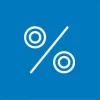The low-interest environment and the economic crises in Europe and Russia have made Swiss government bonds very popular in recent years. It isn’t surprising that over the past few years, the number of foreign investors turning to Swiss government bonds has shot up.
Even taking recent changes in banking policies into account, Switzerland is still considered to be a secure economy and the Swiss franc is seen as a safe haven for investors across crises-ridden Europe.
To slow the run on the Swiss franc, the Swiss National Bank (SNB) imposed negative interest rates in 2015.
The general interest rate, stock market and economic situation has had an effect on Swiss government bonds. The Federal Government already profits off the sale of short-term bonds (like 3-month money market notes), and thus was compensated for providing these investment vehicles.
Now, for the first time, long-term Swiss government bonds are being issued with negative effective yield rates.
To slow the heavy demand for long-term bonds, Swiss 10-year federal government bonds issued in April were priced at 116% of the bonds’ face value.
After accounting for the annual coupon of 1.5% across the 10-year term, the total annual yield of these bonds comes to a negative -0.055%.
In the meantime, the market value of these bonds has actually gone up even further, forcing yields even deeper into the red. The potentially hefty fees for the purchase and sale of bonds, which typically aren’t accounted for when calculating returns, also add to the costs.
Even so, institutional investors were and are still ready to accept negative interest rates either because they expect to earn much lower returns using other investment vehicles or because they hope to sell the bonds at a profit. Through buying bonds, financial institutions can get around the -0.75% negative rate they pay to hold deposits at the Swiss National Bank.
More on this topic:
How do I trade bonds?
What is a government bond?
Swiss online broker comparison

 Deal of the Day
Deal of the Day 




